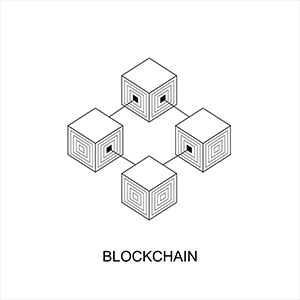In a report released in May of 2023, the Institute of Food Technologists (IFT) offered an encouraging and attainable outlook for cooperative and effective functionality throughout the global food supply chain. And with traceability as the primary goal in this diverse landscape of users, challenges and solutions abound. Less a snapshot of where we have been, this report is a helpful guide to where we are going and how best the industry will achieve compliance to the Food Safety Modernization Act (FSMA) by January 20, 2026.
Traceability Challenges in a Global Food Supply Chain
Traceability is a common goal in all industries. But when food and beverage is your bread and butter, the ability to trace a single ingredient can be a matter of life and death. Based on findings in a 2006 study, the Center for Disease Control (CDC) reported the following yearly totals: 37.2 million cases of foodborne illnesses; 228,744 resulting hospitalizations; and 2,612 deaths.[1] In order to improve the landscape of health and safety in the food and beverage industry, the IFT in conjunction with the FDA embarked on a study[2] of how low- or no-cost technology could improve traceability for businesses within the global food supply chain.
One of the greatest challenges in achieving uniform traceability lies in the vastness within the food supply chain itself. Those beholden to compliance are defined as “all persons who manufacture, process, pack, or hold foods that appear on the Food Traceability List (FTL).[3]” And this rule applies to all foods that are consumed in the U.S. market, not just those grown in the U.S. All laborers—planters, harvesters, processors, handlers, packers, distributors, shippers and retailers—who interact with any item on the FTL[4] must be recorded and tracked according to FDA guidelines. These guidelines include procedural protocol for food handling as well as timelines for processing and documentation. Whether the starting point of a single ingredient is stateside or overseas, it generally travels several places before arriving on a grocery store shelf or appearing on a restaurant’s menu.
Within this huge network of players lies the next challenge: economic and technological diversity. While economy and technology are not always one and the same, the typical overlap is demonstrated in the specific case of a head of lettuce. On one end of the supply chain continuum, a head of lettuce begins its journey in a field. There are no handheld scanners or databases in this lettuce’s origin story. There is only the hot sun, an irrigation system, and hard-working people laboring up and down the rows of lettuce. Now flash forward to Aisle 1 of your local grocery store. By now this lettuce has been inspected, washed, shrink-wrapped, labeled, UPC-ed, shipped, received and shelved. With each new set of hands it has passed through—both human and mechanical—it has likely experienced an ascending economic stratum with advancing technological features at each step. Sophistication and automation often increase exponentially as the number of places on the continuum increases. A head of lettuce purchased at your local farmers market, for instance, may have only changed hands once or not at all, while a vacuum-sealed carton of greens at your regional mega-outlet has likely seen many locales as well as top-of-the-line technology and automation.
In addition to a variety of technologies, it is likely that this head of lettuce has also passed through the hands of people speaking multiple languages. The laborers at the beginning of the continuum are often non-native English speakers. And regardless of a laborer’s native tongue, lower rates of literacy are common in entry level food industry jobs. According to statistics published by the Department of Labor in 2018, 77% of U.S. farmworkers report Spanish as their primary language. And the same report states that the average level of formal education completed was eighth grade.[5] Therefore, compliance across the continuum must be translatable and comprehendible to all levels of experience and available in all languages of users.
The challenge of complete supply chain compliance from one end of the spectrum to the other warrants cooperation across many lines: state, national, linguistic, cultural and economic to name a few. The need for intuitive solutions and an easy to implement process is paramount.
Technology as the Traceability Solution
With a better understanding of the global food supply chain itself, it is not hard to see why solutions can be found in the tech sector. When the food supply chain existed primarily in a local economy, keeping paper records was a viable process. Now the food supply chain is a global enterprise, and as such, processes must also operate on a global scale.
Tech solutions offer ready-made customization. Language translations, infographics, flowcharts and videos are easily incorporated into platforms for ease of use across all segments of the supply chain. This is beneficial to both domestic and international operations, and it is especially advantageous to those whose operations span both.
The availability of cloud-based platforms has elevated technological capabilities. No longer does every physical operation need its own dedicated server; rather, information is stored and remains accessible anywhere—from a single lettuce field all the way to the grocery store aisle across the world.
“It used to be common that shipments would arrive without necessary paperwork such as invoices, bills of lading or certificates of analysis. Even shipping labels would commonly be ripped off or illegible,” says Geoff Ellis, COO of Wherefour. “Things get lost in the mail. But when all pertinent information is stored in the cloud, it’s unquestionably accessible to the receiver, the shipper and the transport company.”
Not only does the use of cloud-based technology streamline operations for shipping and receiving, but it does the work ahead of time for quality assurance and regulatory compliance. Documentation does not have to be intentionally gathered and prepared for audits. Everything is already in order when a cloud-based tech platform is employed.
The FSMA’s Traceability Plan guide[6] mandates specific controls and standards for record keeping, all of which are reliant on lot codes. Lot code traceability is easily achievable with a comprehensive software solution. And data sharing is significantly improved with a cloud-based system. All involved parties can be in separate parts of one building or in different parts of the world, and they can still be on the same page operationally.
Expertise in the Tech Sector
With the FDA’s commitment to increased traceability, a shift in focus from response to prevention is apparent. And tech solutions have the unique ability to measure efficacy in procedural implementation across the supply chain continuum. Records are created, stored and shared in perpetuity, and those records can be instantly accessed from any location. Leaders in the tech industry are interested in creating solutions that are scalable and transferable. It is not uncommon for a platform whose original design was to address problems in one industry to end up solving a problem in a different industry altogether. Software solutions are by nature about operational functionality and can be applied to any operation therein.
Furthermore, evolution in the tech sector is rapid and collaborative. Expert insights and advancements drive competitors to continually improve and increase productivity and efficiency. “The tech sector is driven by a healthy sense of collaboration and competition,” says Ellis. “It’s exciting to watch the bar being raised by our competitors. It really motivates us to raise it even further with each new feature we develop.”
In order to achieve FSMA compliance within the diverse global food supply chain, implementing low- or no-cost tech-enabled traceability solutions is essential. It is in everyone’s best interest to remove any barriers that would otherwise prevent viable and nutritious food from getting to market.
References
[1] Scallan, E., Hoekstra, R. M., Angulo, F. J., Tauxe, R. V., Widdowson, M., Roy, S. L….Griffin, P. M. (2011). Foodborne Illness Acquired in the United States—Major Pathogens. Emerging Infectious Diseases, 17(1), 7-15. https://doi.org/10.3201/eid1701.p11101
[2] Bratager, Sarah…Grantham, Alison. (2023, May 17). IFT’s Tech-Enabled Traceability Insights Based on the FDA’s Low- or No-Cost Traceability Challenge Submissions. Retrieved from https://www.ift.org/-/media/gftc/pdfs/ift-tech-insights-fda-nolowcost-traceability-report-2023.pdf
[3] FSMA Final Rule on Requirements for Additional Traceability Records for Certain Foods. (2023, June 26). Retrieved from https://www.fda.gov/food/food-safety-modernization-act-fsma/fsma-final-rule-requirements-additional-traceability-records-certain-foods
[4] Food Traceability List. (2023, June 26). Retrieved from https://www.fda.gov/food/food-safety-modernization-act-fsma/food-traceability-list
[5] Hernandez, Trish and Gabbard, Susan. (2018, January). Findings from the National Agricultural Workers Survey (NAWS) 2015-2016: A Demographic and Employment Profile of United State Farmworkers. 10-14. Retrieved from https://www.dol.gov/sites/dolgov/files/ETA/naws/pdfs/NAWS_Research_Report_13.pdf
[6] Requirements for Additional Traceability Records for Certain Foods: What You Need to Know About the FDA Regulation: Guidance for Industry. Small Entity Compliance Guide. (2023, May). Retrieved from https://www.fda.gov/media/168142/download










